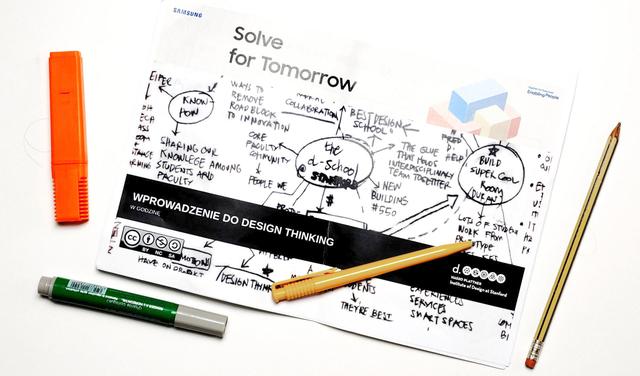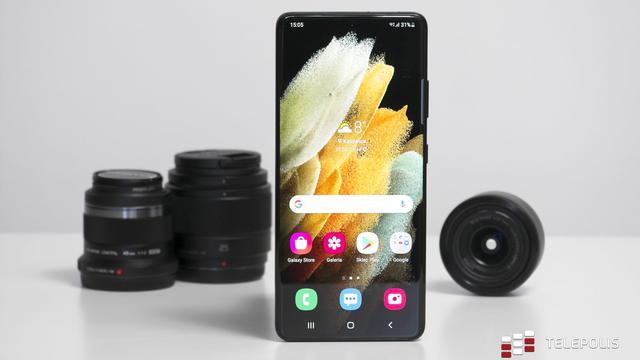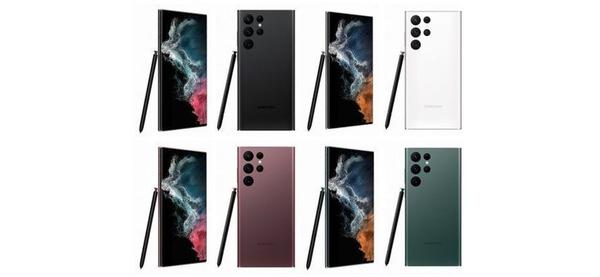Samsung invited me to a workshop on a topic called Design Thinking. What is this? I didn't know, designing something... It'll be a dry lecture, lots of motivational talk that will put me to sleep. But it was completely different.
I was given paper, colored markers and an assignment: to design a wallet.
Nothing could be easier. On a piece of paper, I sketched a simple wallet with one small compartment for payment cards, a pocket for coins and a traditional compartment for banknotes. Everything is simple, economical, minimalist, because who carries so much metal, paper and plastic these days when you can have a smartphone with NFC and Google Pay. To add a bit of modernity, I added a location module - this will allow you to track a lost wallet using Bluetooth or GPS.
Yes, it's a perfect wallet, perfectly adapted to today's times. Everyone would like to have one! That's what I thought, but I was quickly brought down to earth.
Designing "as I would like" is of course a tempting vision that has certainly brought some success in the market. However, there are many pitfalls behind it, which will lead to failure instead of success.
Because someone doesn't want to have a wallet at all, they carry everything in their smartphone. In his trouser pocket, he has PLN 2 for a trolley to the store. Someone else, on the contrary: carries not only zlotys, but also small coins left over from a holiday in Bulgaria three years ago, plus a thick bundle of banknotes, a dozen or so payment cards (including invalid ones) and loyalty cards, a photo of a loved one, business cards of himself and recently met people and receipts from Orlen and stickers from Biedronka. Yet another person wants a secure NFC wallet with several cards encased in a radio-tight compartment. Some want a wallet in rainbow colors, others black, some sporty made of durable nylon, others traditional leather. And so on and so forth…
And this is the starting point for designing with the Design Thinking method. It can be applied to simple everyday things, but also to the creation of products using advanced technologies.
Okay, how do you design that perfect wallet?

Design Thinking is design in five steps.
- Empathization - listening to the needs of others. Modelly, this stage of design is group work, defining the target audience and organizing information. In the case of the workshop portfolio, it was done in a simpler form: I had to interview another meeting participant. I asked, do you carry cash or cards? Do you pay with a smartphone? Do you carry documents, e.g. ID? And the coins? After these technical issues, there was a series of questions relating more to the sphere of feelings, personal. What else might you need a wallet for besides payments? Do you carry photos, any souvenirs?
- Defining the problem, or in other words, understanding the needs of the recipients. At this point, you should focus on who your audience is and what they need. During the workshop at this stage, I had to specify in five points what is really the most important for my interlocutor, also taking into account what he himself did not immediately express in words, but I noticed it. He said he just needed a wallet to carry small amounts of bills and coins. During the conversation, it turned out that he does not treat the wallet only as a trivial everyday item, but he would appreciate in it ... the additional function of a simple notebook. To save something not on the phone, but traditionally. Or maybe record a spoken thought?
- Generating solutions - at this stage of Design Thinking, it's time to propose ideas and organize them. In a larger, cooperating group, this is the time for brainstorming. So I start to figure out how to combine a wallet with a notebook or a mini voice recorder. I come up with five different solutions that could be in a new wallet. I sketched a new graphic design of the wallet, not according to my whim, but based on the collected information.
- Prototyping - at this point, Design Thinking assumes presenting the most important assumptions of solving the problem on diagrams or mock-ups. During the workshop, we got additional sheets and markers, glue, adhesive tape, paper clips, straws, and we made prototypes or mock-ups of such a wallet. Then I really felt like a kid in elementary school in art class - but I also felt that this is an important stage, crowning the not-so-simple process of analyzing the problem and creating ideas.
- Testing - the last stage is the presentation of prototypes to other users and on a summary of the information obtained. I showed my mock-up to a friend for whom I was designing a wallet. He looked at me as if I were a Martian, and even though he didn't say a bad word, I understood that I had to go back to the previous stages and change some of my ideas, start again. It doesn't matter - Design Thinking is also learning from mistakes and appreciating the educational value of failure. The assumption is that drawing conclusions from failures gives you the opportunity to look for new solutions.
Design Thinking by Samsung
What was the idea behind this Samsung meeting and workshop? The Korean company has been running an educational program called Solve for Tomorrow for years. Its aim is to strengthen the competences of the future in young people, encourage them to be active, convince them to creative courage and encourage them to implement their own, sometimes crazy, but potentially groundbreaking projects.
In October, recruitment for the Solve for Tomorrow program addressed to Polish youth is underway. Students from secondary schools with teachers and students from the first and second year of first-cycle studies can apply from it.
The task of young people is to propose a project on the three biggest challenges of the modern world:
Applications for the Solve for Tomorrow program are made via the form at www.solvefortomorrow.pl and lasts until October 31, 2021.
Design Thinking will allow you to get out of the usual patterns, look at your idea from a different perspective. At the same time, thanks to working with this method, young people will gain competences valued on the labor market today. They will be more sensitive to the needs of other people and learn that mistakes are ok and it is thanks to them that we can develop and improve our ideas. Working with the DT method definitely opens people up, triggers their creativity and makes them braver and more self-confident
- argues Marta Florkiewicz-Borkowska, ambassador of the Solve for Tomorrow program, winner of the prestigious title of Teacher of the Year 2017.
It starts with felt-tip pens and a sheet of paper, goes through stages of analysis, brainstorming, trials, tests, and then evaluating them - and the result can be great inventions that change our everyday lives or simply sell great. So let's keep our fingers crossed that the Solve for Tomorrow program will result in unique ideas of Polish youth!
See: Samsung launches the Solve for Tomorrow educational programSee: What to do with e-waste? This will be taught by the ElectroEcology Center
Do you want to be up to date? Follow us on Google NewsImage credit: on, Samsung
Tags:samsungsolve for tomorrowdesign thinkingView comments X Scroll down to next post

